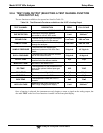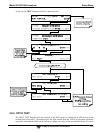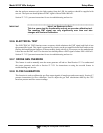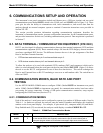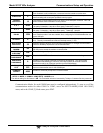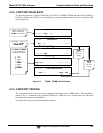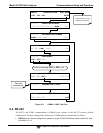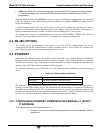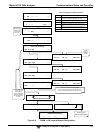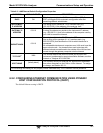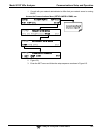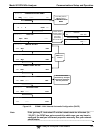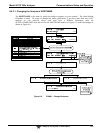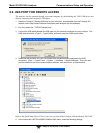
Model 9110T NOx Analyzer Communications Setup and Operation
Teledyne Analytical Instruments 140
COM2 port can be left in its default configuration for standard RS-232 operation including multidrop,
or it can be reconfigured for half-duplex RS-485 operation (please contact the factory for this
configuration).
Note that when the rear panel COM2 port is in use, except for multidrop communication, the rear panel
USB port cannot be used. (Alternatively, when the USB port is enabled, COM2 port cannot be used
except for multidrop).
A code-activated switch (CAS), can also be used on either port to connect typically between 2 and 16
send/receive instruments (host computer(s) printers, data loggers, analyzers, monitors, calibrators, etc.)
into one communications hub. Contact TAI Sales for more information on CAS systems.
To configure the analyzer’s communication ports, use the SETUP>MORE>COMM menu. Refer to
Section 5.7 for initial setup, and to Section 6.2 for additional configuration information.
6.4. RS-485 (OPTION)
The COM2 port of the instrument’s rear panel is set up for RS-232 communication but can be
reconfigured for RS-485 communication. Contact Customer Service. If this option was elected at the
time of purchase, the rear panel was preconfigured at the factory.
6.5. ETHERNET
When using the Ethernet interface, the analyzer can be connected to any standard 10BaseT or 100BaseT
Ethernet network via low-cost network hubs, switches or routers. The interface operates as a standard
TCP/IP device on port 3000. This allows a remote computer to connect through the network to the
analyzer using APICOM, terminal emulators or other programs.
The Ethernet connector has two LEDs that are on the connector itself, indicating its current operating
status.
Table 6-2: Ethernet Status Indicators
LED FUNCTION
amber (link) On when connection to the LAN is valid.
green (activity Flickers during any activity on the LAN.
The analyzer is shipped with DHCP enabled by default. This allows the instrument to be connected to a
network or router with a DHCP server. The instrument will automatically be assigned an IP address by
the DHCP server (Section 6.5.2). This configuration is useful for quickly getting an instrument up and
running on a network. However, for permanent Ethernet connections, a static IP address should be used.
Section 6.5.1 below details how to configure the instrument with a static IP address.
6.5.1. CONFIGURING ETHERNET COMMUNICATION MANUALLY (STATIC
IP ADDRESS)
To configure Ethernet communication manually:
1. Connect a cable from the analyzer’s Ethernet port to a Local Area Network (LAN) or
Internet port.



